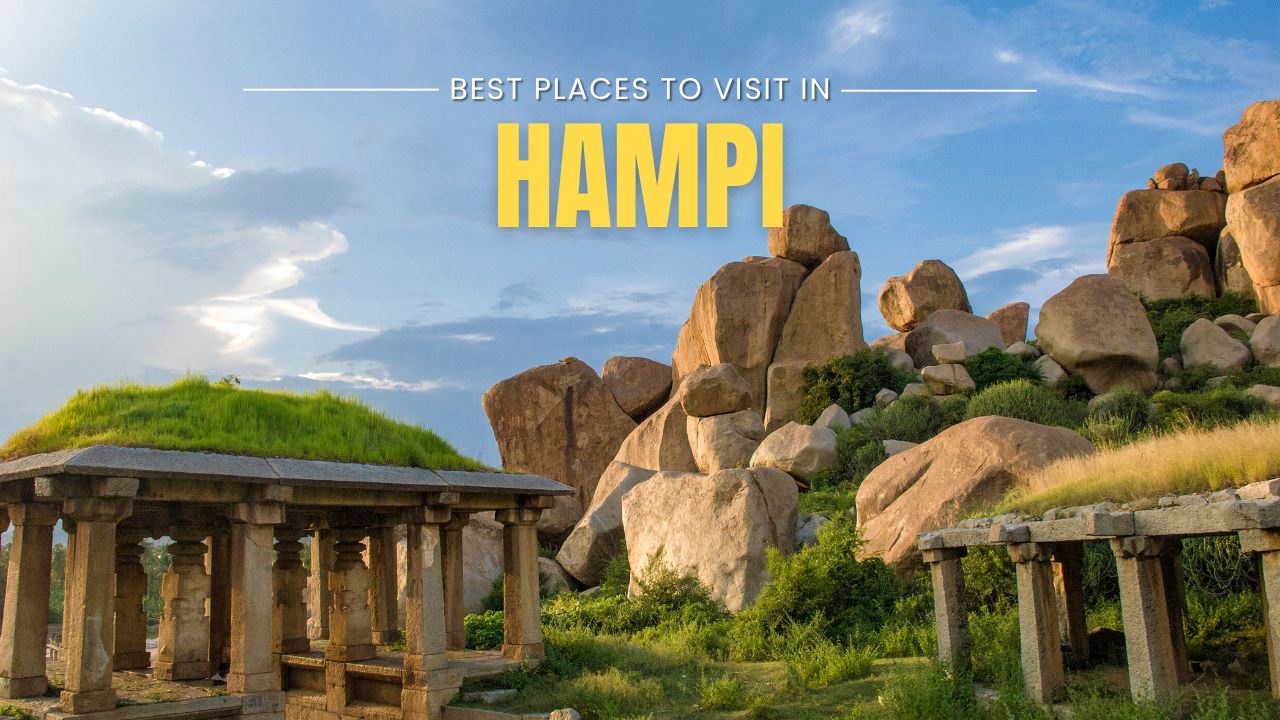
Virupaksha Temple, located in Hampi, Karnataka, is one of the oldest and most significant temples dedicated to Lord Shiva, also known as Virupaksha or Pampapathi. The temple dates back to the 7th century CE and is part of the Group of Monuments at Hampi, which has been designated as a UNESCO World Heritage Site. The temple complex showcases remarkable architecture that reflects the grandeur of the Vijayanagara Empire. The temple features an impressive nine-story gopuram (tower) that rises to about 50 meters, making it a prominent landmark in Hampi. The intricate carvings on the gopuram depict various Hindu deities and mythological scenes, showcasing the artistic excellence of the period. Inside the temple, visitors can find a central shrine housing the main deity, along with several smaller shrines dedicated to other gods and goddesses, including Bhuvaneshwari and Vidyaranya. Virupaksha Temple has been a continuous center of worship since its establishment and remains an active religious site today. Pilgrims and tourists flock to the temple not only for its spiritual significance but also for its architectural beauty. The temple's layout includes spacious courtyards, pillared halls, and beautifully adorned ceilings that feature ancient frescoes dating back to the 14th and 16th centuries. Key attractions within the temple complex include the sacred Nandi bull statue, which serves as the vehicle for Lord Shiva, and various stone inscriptions that provide insights into Hampi's rich history. The annual chariot festival held in March or April attracts thousands of devotees who celebrate the marriage of Lord Virupaksha to Goddess Pampa. The best time to visit Virupaksha Temple is during the winter months from September to February when the weather is pleasant for exploration.
The Vijaya Vittala Temple, located in Hampi, Karnataka, is one of the most famous and architecturally significant temples in India. Built during the reign of King Devaraya II in the 15th century, this temple is dedicated to Lord Vittala, an incarnation of Lord Vishnu. The temple complex is a UNESCO World Heritage Site and showcases the exquisite craftsmanship of the Vijayanagara Empire. One of the key attractions of the temple is its Stone Chariot, which is a remarkable structure made from granite blocks and symbolizes the grandeur of Hampi. The chariot originally enshrined Garuda, the vehicle of Lord Vishnu, and is adorned with intricate carvings depicting mythical battle scenes. Visitors are often captivated by its beauty and historical significance. Another highlight of the temple is the Musical Pillars within the main hall (Maha Mantapa). These 56 pillars are known for producing musical notes when tapped gently, creating sounds akin to those of traditional Indian musical instruments. This unique feature has earned them the nickname "SaReGaMa" pillars, indicating their musical properties. The temple complex also includes several other important structures such as the Kalyana Mandapa, Utsava Mandapa, and a series of pillared corridors that enhance its architectural splendor. Each section is adorned with detailed carvings that narrate stories from Hindu mythology. To reach Vijaya Vittala Temple, visitors can take a cab or auto-rickshaw from Hampi Bus Stand (approximately 9 km away) or enjoy a scenic walk through the ruins of Hampi. The area is well-connected and accessible for tourists exploring Hampi's rich heritage. The best time to visit is during the cooler months from October to February when the weather is pleasant for exploration.

Hampi Bazaar, also known as Virupaksha Bazaar, is a significant historical marketplace located in Hampi, Karnataka. Stretching over a kilometer, it lies directly in front of the famous Virupaksha Temple and extends towards the foothills of Matanga Hill. This bazaar was once a bustling center of trade during the Vijayanagara Empire, where merchants sold precious stones, textiles, and other luxury goods. The bazaar is lined with ancient pavilions that date back to the 15th century, showcasing traditional architecture with both single and two-storied structures. Although many of these pavilions are now in ruins, they provide a glimpse into the grandeur of Hampi's past. The eastern end of the bazaar features a massive Nandi bull statue, known as Yeduru Basavanna, which is a popular photo spot for visitors. Visitors can explore various shops selling local handicrafts, textiles, jewelry, and souvenirs. The bazaar also hosts small eateries where tourists can sample local cuisine. The vibrant atmosphere is especially lively during the annual Hampi Utsav festival held in November, when cultural performances and festivities take center stage. To reach Hampi Bazaar, visitors can walk from the Hampi Bus Stand, which is only about 0.1 kilometers away. The area is pedestrian-friendly and offers a unique opportunity to experience local life and culture. The best time to visit Hampi Bazaar is from October to February when the weather is pleasant for exploration.
Matanga Hill, the highest point in Hampi, promises breathtaking views of the sprawling ruins, boulder-strewn landscape, and the meandering Tungabhadra River. The trek to the hilltop is rewarding, especially during sunrise or sunset when the entire landscape is bathed in golden hues. It's a must-visit for nature lovers and photographers.
Achyutaraya Temple, dedicated to Lord Vishnu, is a testimony to Hampi's architectural splendor. Although in ruins, the temple's intricate carvings, massive pillars, and towering gopuram continue to mesmerize visitors. From the temple premises, one can enjoy panoramic views of the surrounding ruins and the lush countryside, making it a photographer's paradise.